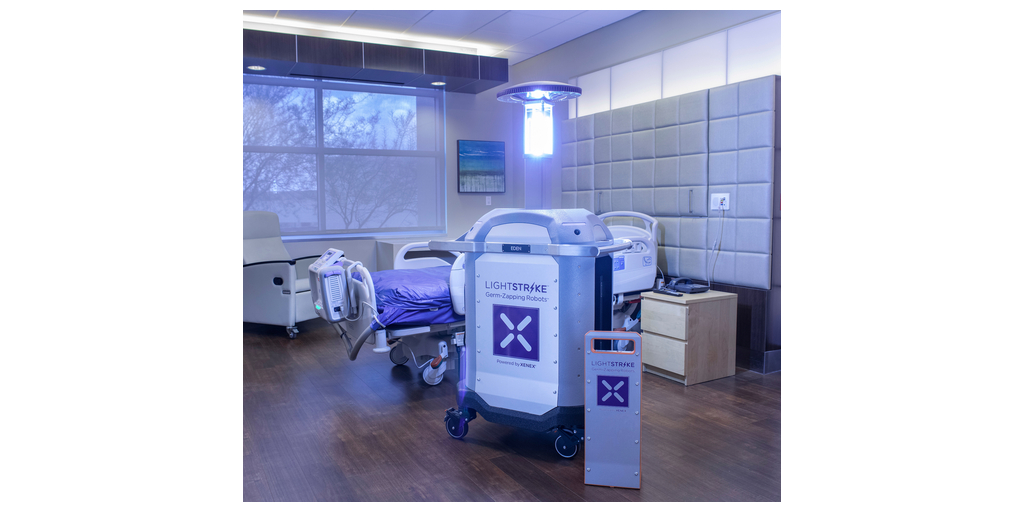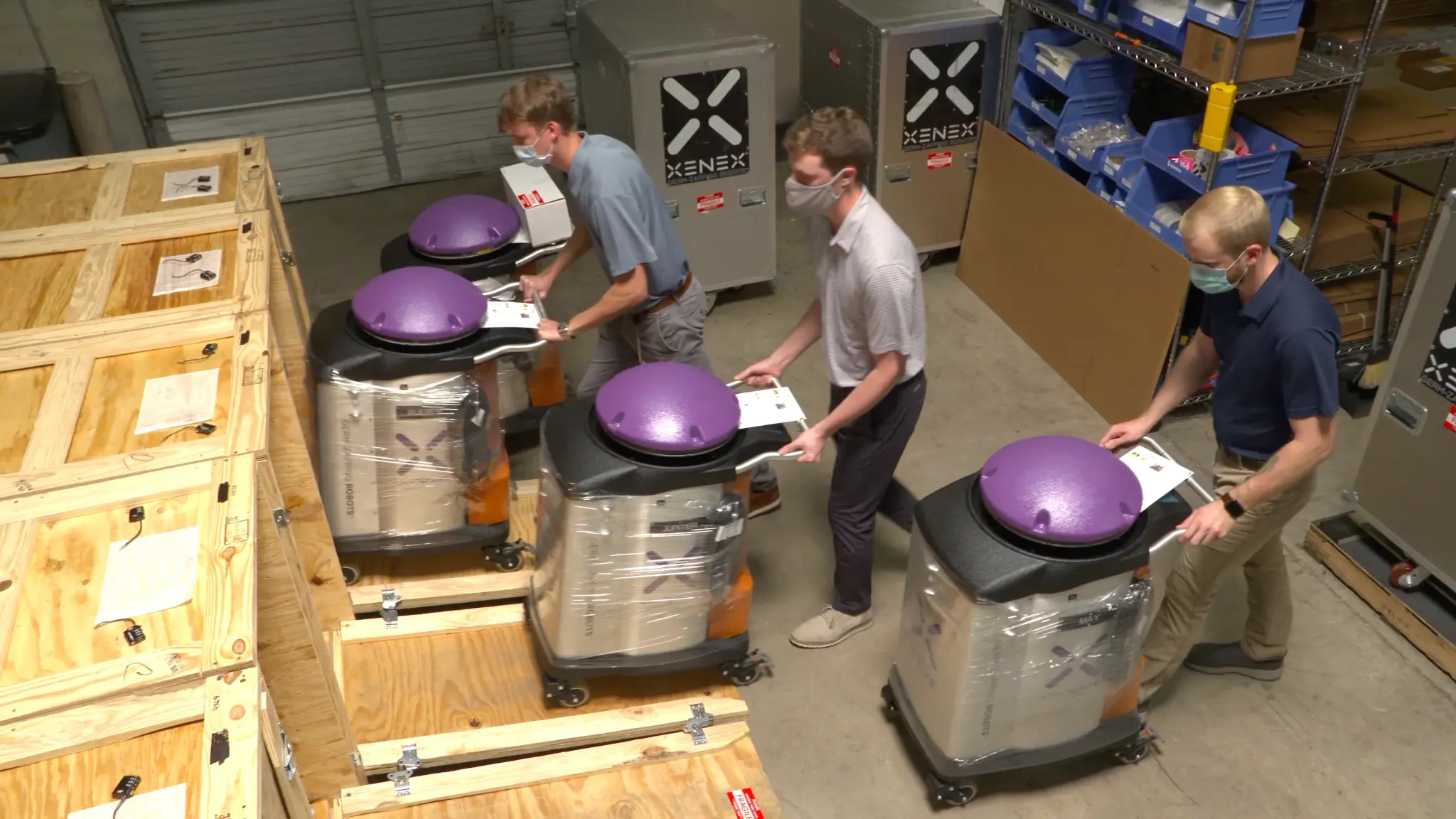At least half a dozen hospitals in the New York City area are utilizing $100,000 robots equipped with high-intensity light to combat a deadly drug-resistant fungus that is spreading across the country and state.
The Xenex UV LightStrike Robots have a 99% success rate in halting the spread of Candida auris, a potentially fatal drug-resistant fungus first identified in Japan in 2009, according to a study by Netcare Hospitals.
Last year, New York state experienced a record number of Candida auris cases — a “diabolical” fungal infection that can cause sepsis if it enters the bloodstream.
Xenex Disinfection Services, which informed The Post that it has disinfecting robots in local hospitals and at least 130 veterans hospitals nationwide, applied for approval from the Food and Drug Administration earlier this year for the device that uses xenon light, commonly found in vehicle headlights.
The light emitted is 4,300 times more intense than the standard bulb and kills germs more quickly than mercury-based UV bulbs used in other machines, according to the company.
“It’s the difference between a Porsche and a [Ford] Model A,” said Morris Miller, the company’s CEO.
The company stated that the robots are currently being deployed at local hospitals, including Memorial Sloan Kettering Cancer Center, which has locations around the New York City area, North Shore University Hospital in Long Island, and Phelps Memorial Hospital in Sleepy Hollow.

Miller added that the robots are being utilized in at least 130 Department of Defense and Veterans Affairs hospitals across the country.
Miller also mentioned that the robots were designed by two epidemiologists and can disinfect a hospital room in about 10 minutes.
“On an ultra-serious and scary pathogen, you’re talking about 15 minutes on the left side of the room, 15 minutes on the right side of the room, and you’re done,” Miller said.
Dr. Donna Armellino, an infection prevention specialist at Northwell Health, stated that she and her colleagues use UV devices, including Xenex robots and similar devices from Leviant Inc., in addition to traditional cleaning methods.
Armellino noted that the robots are also used in neonatal intensive care units.
Armellino added that the federal government has yet to set standards regarding UV devices, and there is still more to learn about the devices, as well as the best ways to use them.
“There needs to be more literature and controlled studies,” she said.
